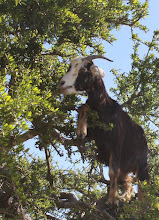Why Should the Birds Dine Elsewhere?
In Washington and Beaufort counties, ‘Support the Troops’ is far from a meaningless phrase. The Navy’s insistence on Site C for an outlying airfield or OLF has brought stunned disbelief to many as the Navy continues to disregard scientific data, the warnings of military bird strike abatement experts and the professional opinions of the US Fish & Wildlife Service. They are dismayed that the Navy would have so little regard for their pilot’s safety and that the 57 million dollar price tag per aircraft for an F/A 18 isn’t an investment worth protecting. The experts agree – a birdstrike accident isn’t a matter of ‘if’ but ‘when’.
Colonel Jeffery J. Short, USAFR stated, “In 25 years of dealing with military BASH (Bird Aircraft Strike Hazard) issues, I cannot recall a worse place to situate an airfield for jet training.” A recent radar study conducted by Ronald L. Merritt, a former Chief of the USAF BASH Task force was sent to Navy Secretary England that stated, “There are very few places in the United States where this level of threat exists.”
The US Fish & Wildlife Service is listed by the Navy as a cooperating agency on the SEIS (Supplemental Environmental Impact Statement) but when the US Fish & Wildlife Service told the truth about their findings, the Navy decided they needed to find other experts to tell them what they wanted to hear. Don Hunsaker, II, may be a specialist in avian ecology but he was paid for his opinion. The experts at the NFWS were doing their jobs. They are also not allowed to discuss their findings with the public. They were placed under a gag order by Todd Willens, the Deputy Assistant Secretary for the Department of the Interior in January, 2007. If the public wants information, they can call Dr. Hunsaker in California or the public affairs office of the NFWS in Atlanta, Georgia but they can’t talk to the professionals at the Pocosin Lakes NWR next to Site C.
The original Environmental Impact Statement wasn’t only less than stellar – it was flawed. That is why Judge Terrence W. Boyle of the 4th Circuit Court of Appeals affirmed a lower court ruling that the Navy had not addressed environmental issues required by the National Environmental Policy Act and ordered them to conduct a new study. In the newly released SEIS, the Navy again failed to address the birdstrike issue. The Navy couldn’t manage to fly one jet without dodging a flock of birds as recorded on video and hundreds of birds miles away were visibly disturbed by the planes during the demonstration.
The part of the study that has changed was the Navy’s decision not to buy all the land for the proposed OLF outright. Rather they would lease some portions under restricted easements leaving the families that farm here being told by the Navy that they could not grow what they’re currently growing – namely wheat, corn, and soybeans. This is part of the Navy’s ‘improved’ mitigation plan. They would starve the birds out of the fields by denying them the leavings of the field.
However, this is what the farmers are set up to grow. They have established markets in place. The Navy contends that they should switch their crops to grass, cotton, and trees. A farmer’s investment in equipment can run into millions of dollars. The Navy doesn’t say who should pay to replace their equipment since the machinery for wheat, soybeans, and corn is useless for growing cotton. It doesn’t matter to the Navy that as of February 9, 2007 the USDA states that the world cotton market is depressed and is likely to remain so. It doesn’t matter to the Navy that growing grass doesn’t pay or that trees take 20 years to grow to a profitable size.
One has to wonder at the Navy’s considerable effort and insistence to acquire acreage that by its own admission it does not need. The Southern Environmental Law Center reviewed over 200,000 pages of Navy documents and found that the Navy itself concluded the existing OLF in Virginia was adequate to meet the Navy’s needs. In an email dated April, 2003, it was stated that ‘OLF operations will become obsolete.’ So why the insistence on Site C? Why does the Navy believe it needs 33,000 acres for a concrete landing strip? Make no mistake, this is not a base, this is a runway for practice take offs and landings. Thirty three thousand acres is over 50 square miles – the size of a small city. A city the size of Akron, Ohio or Bloomington, Indiana, half the size of Raleigh at 115 square miles, or ten square miles larger than Wilmington.
All that nice open land probably looks good from 10,000 feet in the air. The northeastern section of North Carolina is some of the last undeveloped land on the Eastern Seaboard. You can see it yourself from Google Earth™. But what you can’t see from a plane or a satellite is what’s taking place on the ground. The family farmers and the birds of the wildlife refuges have a symbiotic relationship. The birds do more than eat the farmer’s leavings of grain and corn. They also leave nitrogen for the farmer’s next crop and they also dine on insects and weeds in the field. Good land stewardship should be rewarded not betrayed.
In these days of heightened national security you don’t hear much mention of one of America’s most vital interests, our food supply. As we continue to export jobs and import food, I hope that we as a nation don’t come to rue the day that we didn’t stand up and protect some of our true American heroes – our family farmers.


0 Comments:
Post a Comment
<< Home